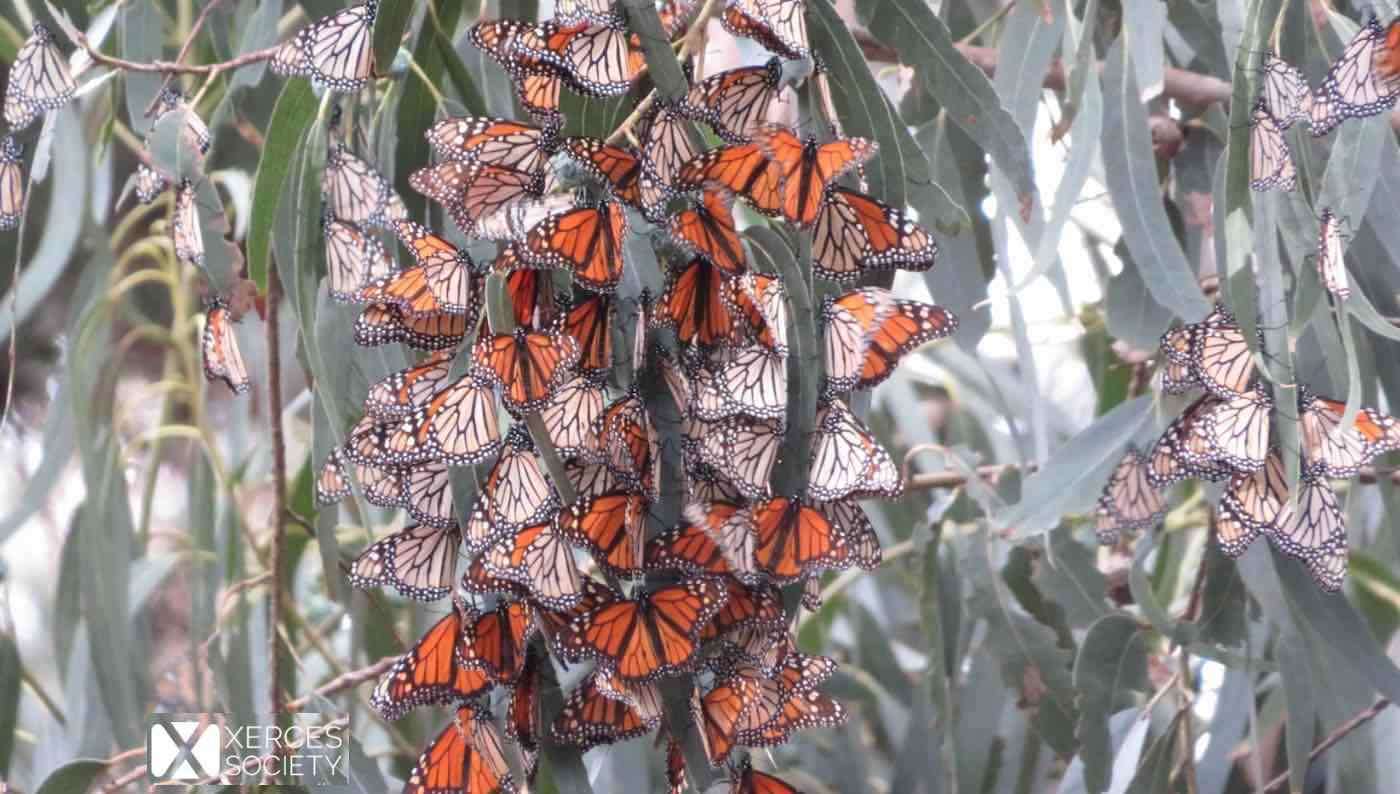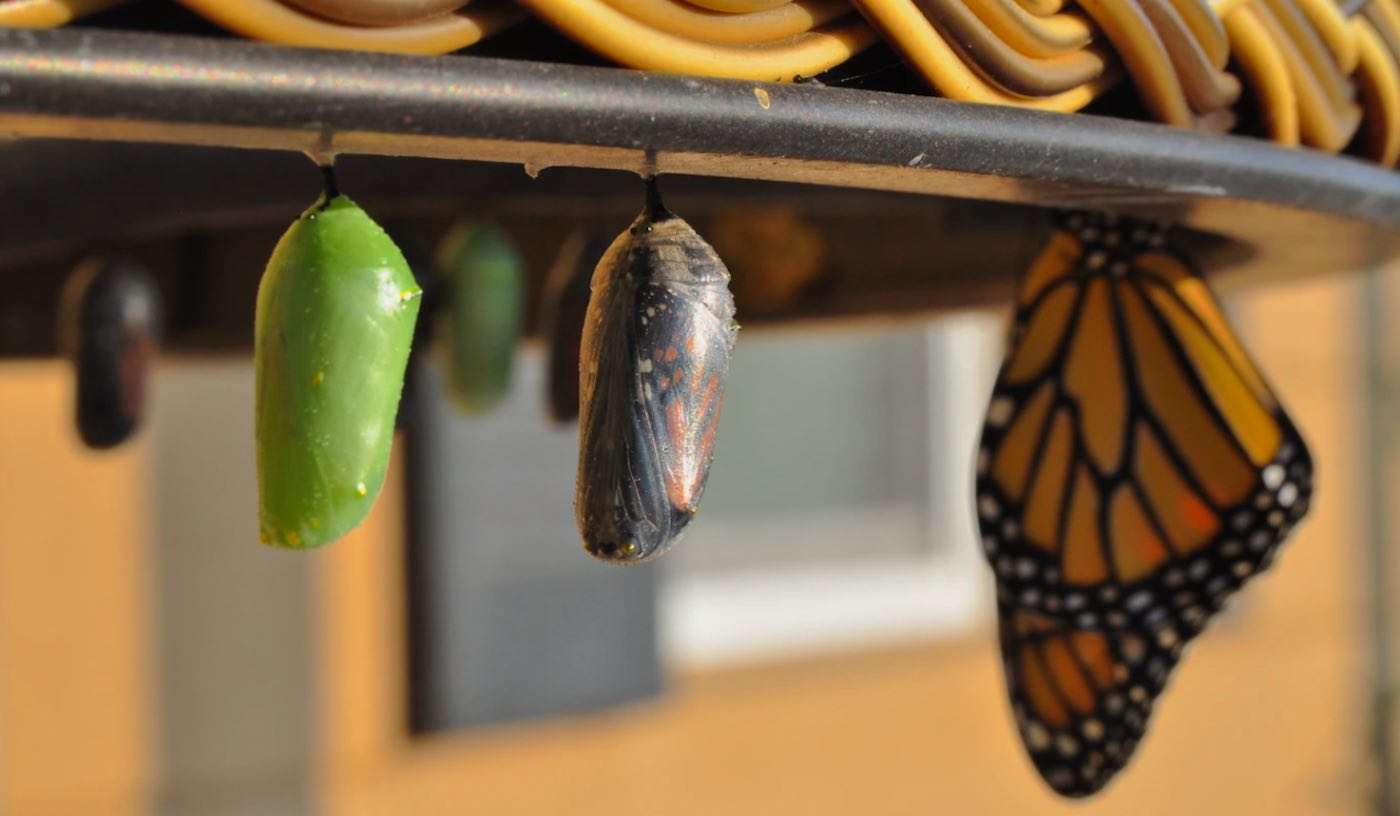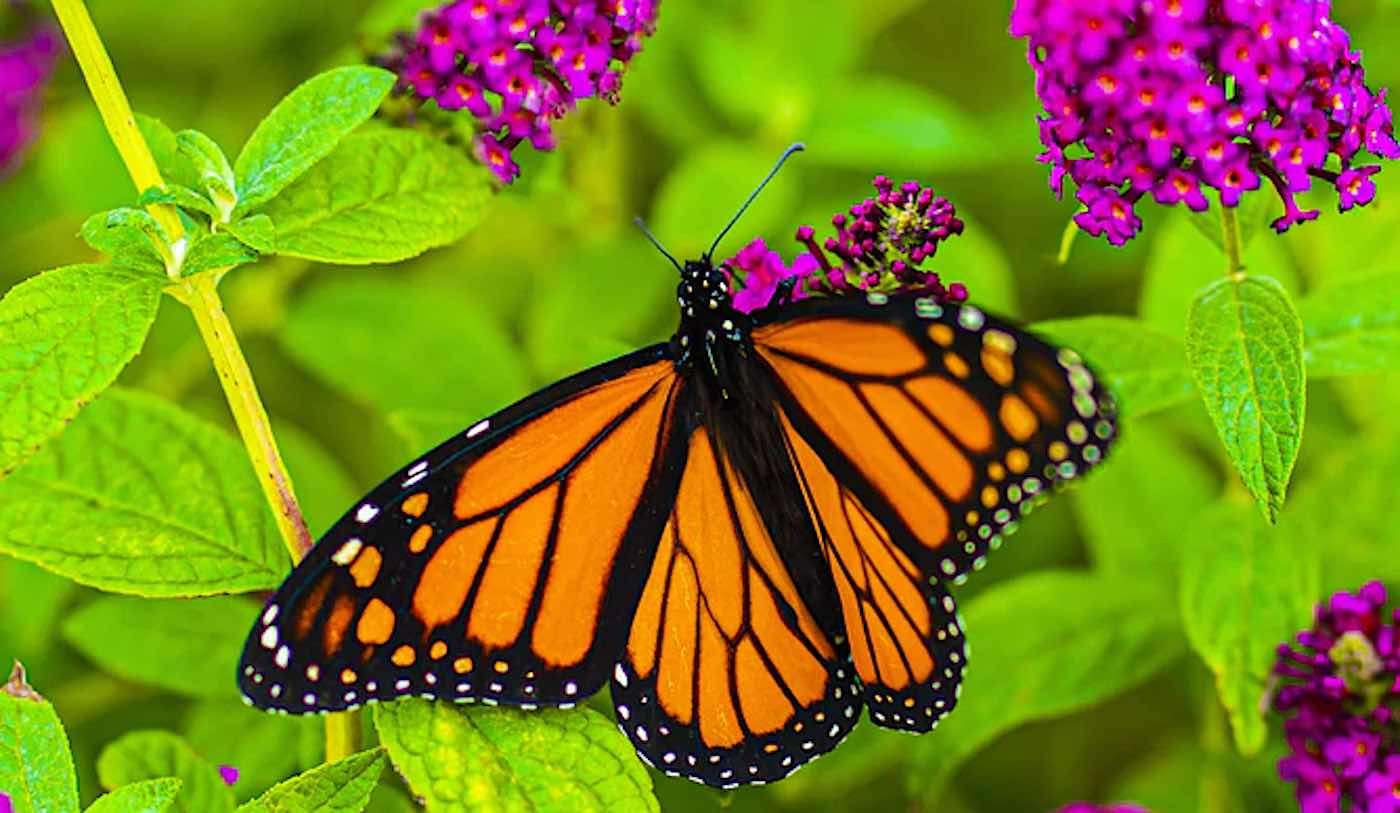Sex Pheromones Could Help Stop Asian Giant Hornets from Invading UK and 'Wreaking Havoc'
Sex pheromones could help stop 'murder hornets' from invading and wreaking havoc, according to a new study from UC San Diego.

The Xerces Society just released numbers from their annual Western Monarch Count—and the tally was remarkable.
The nonprofit announced that 247,237 monarch butterflies were observed across overwintering sites, a 125-fold increase over last year.
Volunteers counted insects at 283 different overwintering sites, and celebrated the 25th anniversary of the Xerces Society Thanksgiving tally.
"This year's total… amazed us with the monarchs' ability to bounce up from a record low," says the group on their website.
In 2021, the Thanksgiving Count reached an all-time record for number of volunteers since the inception of the first count in 1997.
This year's total of nearly a quarter million monarchs illustrates a considerable rebound from 2020's all-time low of less than 2,000—and the two previous years' tallies of less than 30,000 individuals overwintering.
In Monterey County, the city of Pacific Grove celebrated the return of approximately 14,000 monarchs to their sanctuary, and there were thousands at other sites in Big Sur. San Luis Obispo County had over 90,000 butterflies reported at its overwintering sites, including the California State Parks-managed Pismo Beach Butterfly Sanctuary which had the second highest count at an overwintering site this season at 20,871 butterflies. The county with the most monarchs was Santa Barbara County, with over 95,000 monarchs reported. Santa Barbara County also hosted the largest site this year, a count of just over 25,000 butterflies at a private property.
Moving further south, monarchs were found in numbers unseen since the early 2000s. Ventura County contained nearly 19,500 butterflies and had several stand-out sites, including Arundell Barranca with over 7,700 butterflies. Ventura has not seen an excess of 19,000 monarchs since the 2001 Thanksgiving Count, which totaled 28,465 butterflies. In Los Angeles County, volunteers reported over 4,000 butterflies, the highest Thanksgiving Count in that area since 2000.
After surveying a newly discovered overwintering site near one LA beach, the regional volunteer coordinator expressed his excitement. "I was really excited to see for myself the clusters at Hermosa Beach," said Richard Rachman. "Walking up, I was just taken aback at the sheer volume of monarchs, it really says what sustainable urban planning can do to protect biodiversity."

Thanks to public tips, monarchs were also discovered roosting in five new locations this season: three sites close together in San Luis Obispo County and two sites in Los Angeles County. Counts from these five new sites totaled over 7,000 butterflies. This is a reminder that reports from the public are incredibly valuable.
The Monarch Count uses iNaturalist, a joint initiative of the California Academy of Sciences and the National Geographic Society, to follow up on monarch observations from the public.
There are more questions than answers as to why western monarchs bounced back at the rate they did in 2021. It is unlikely that there is a single cause for such a complex migratory journey and a single year's increase.
The 2021 uptick represents a serious "bounce", and conservation scientists hope to instill cautious optimism with news of the 2021 Thanksgiving Count.
"Now more than ever, we have an opportunity to double down on our conservation efforts," says Isis Howard, Endangered Species Conservation Biologist for the Xerces Society. "Harnessing the momentum of this upswing may be our best chance at aiding western monarchs and other at-risk butterflies."
40 years ago, the western butterfly population was estimated in the low millions, so conservationists have more work to do—and you can help.

Here are a few actions you can take to be part of the solution:
FLY This Sweet News to Your Friends on Social Media…
Be the first to comment